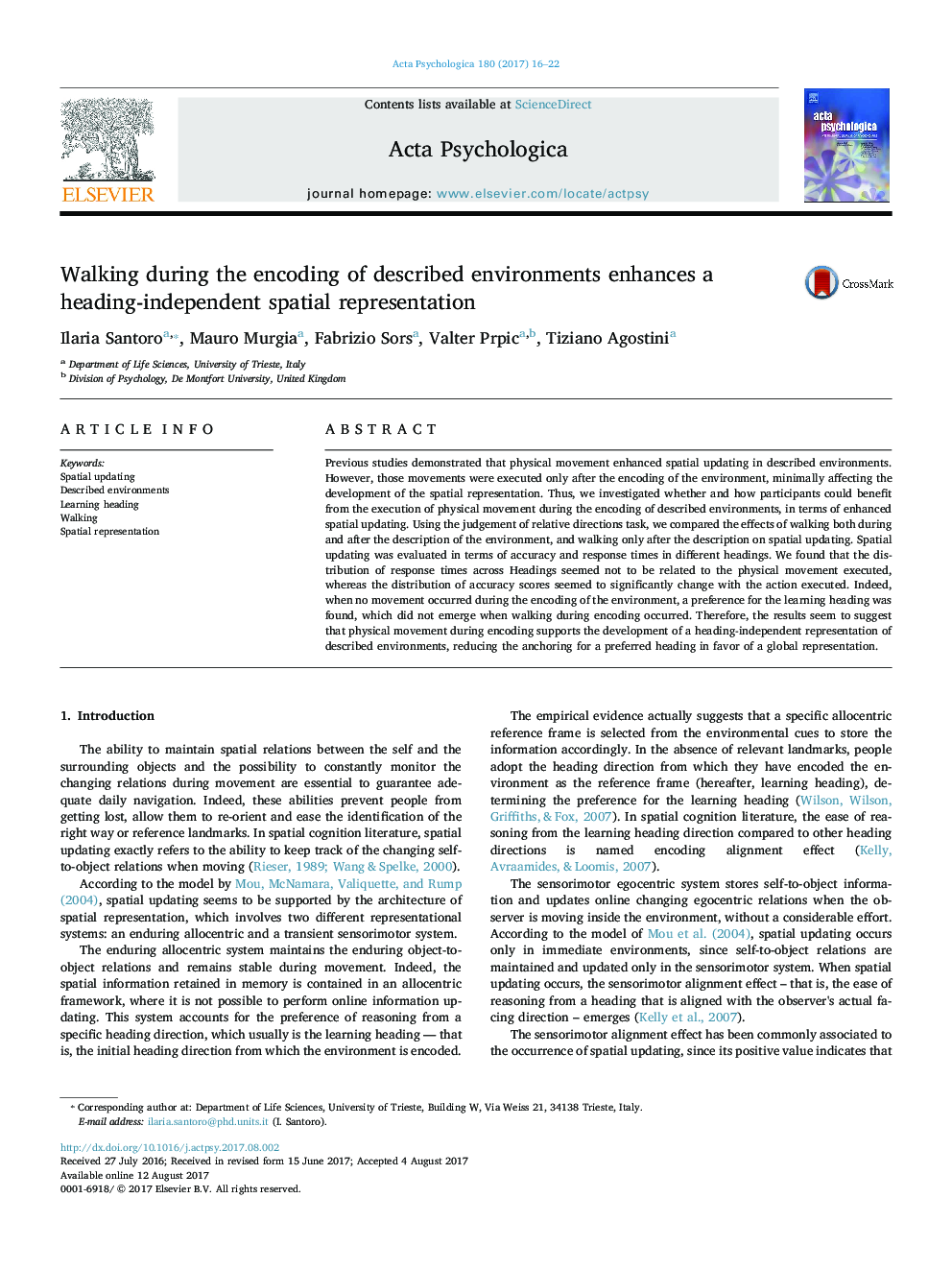| Article ID | Journal | Published Year | Pages | File Type |
|---|---|---|---|---|
| 5040178 | Acta Psychologica | 2017 | 7 Pages |
â¢Walking during encoding led to a heading-independent representation of the narrative.â¢Walking during encoding reduced the preference for the learning heading.â¢The integration of multiple viewpoints occurs also within described environments.â¢Walking during encoding did not promote a higher sensorimotor effect.
Previous studies demonstrated that physical movement enhanced spatial updating in described environments. However, those movements were executed only after the encoding of the environment, minimally affecting the development of the spatial representation. Thus, we investigated whether and how participants could benefit from the execution of physical movement during the encoding of described environments, in terms of enhanced spatial updating. Using the judgement of relative directions task, we compared the effects of walking both during and after the description of the environment, and walking only after the description on spatial updating. Spatial updating was evaluated in terms of accuracy and response times in different headings. We found that the distribution of response times across Headings seemed not to be related to the physical movement executed, whereas the distribution of accuracy scores seemed to significantly change with the action executed. Indeed, when no movement occurred during the encoding of the environment, a preference for the learning heading was found, which did not emerge when walking during encoding occurred. Therefore, the results seem to suggest that physical movement during encoding supports the development of a heading-independent representation of described environments, reducing the anchoring for a preferred heading in favor of a global representation.
